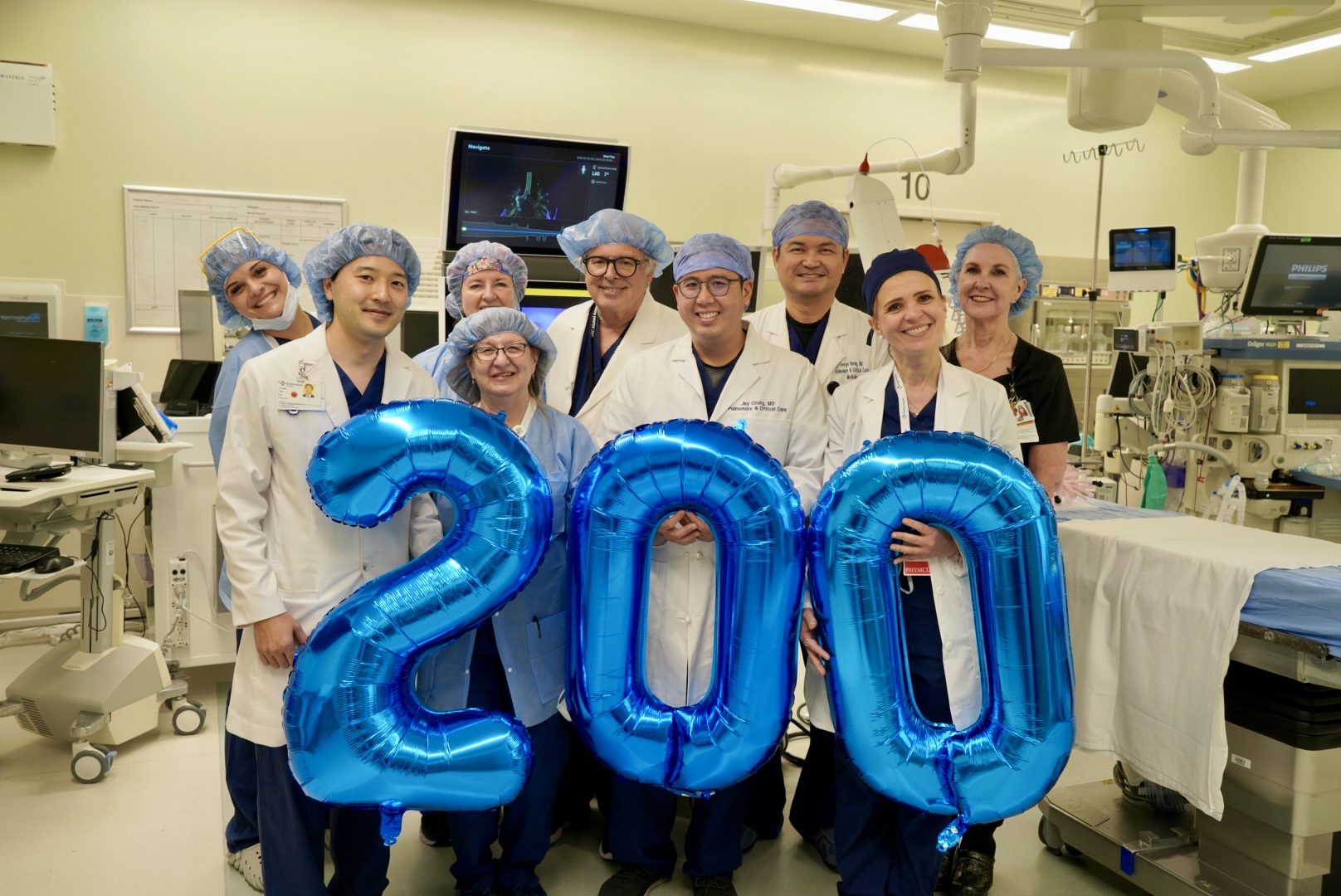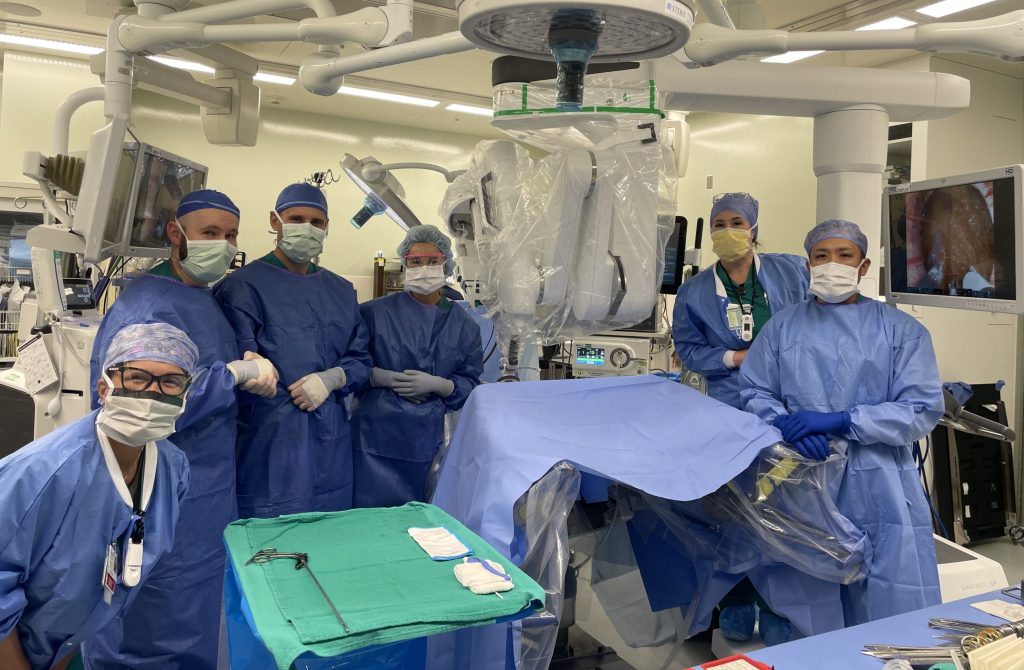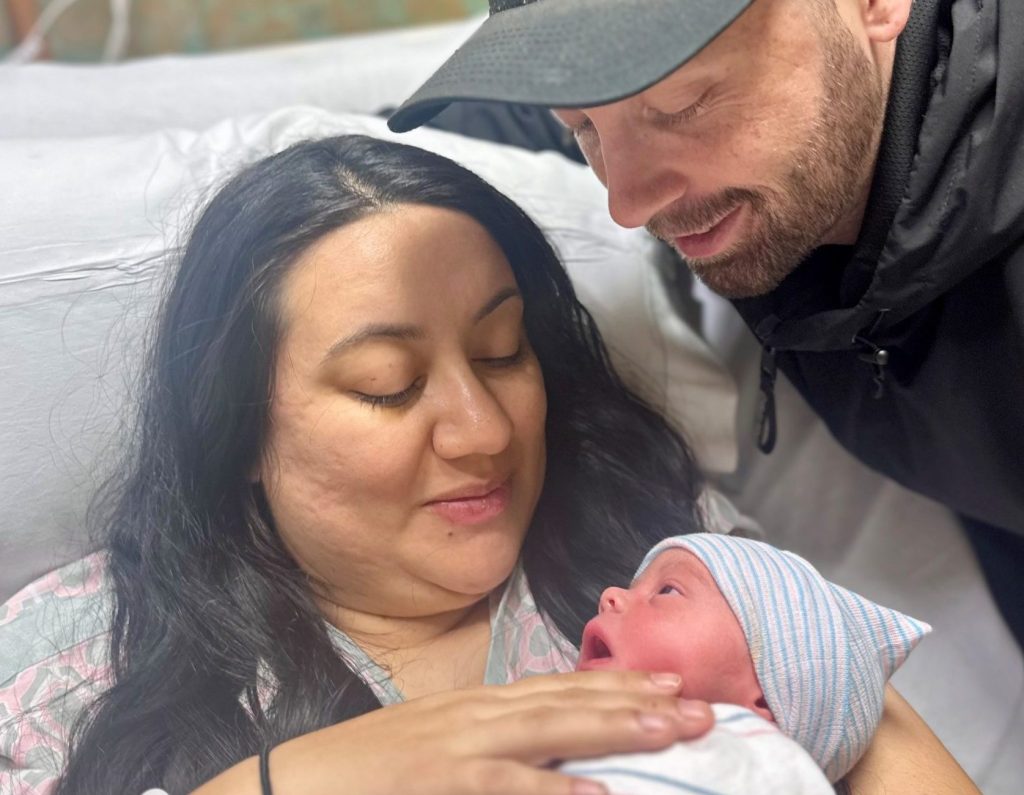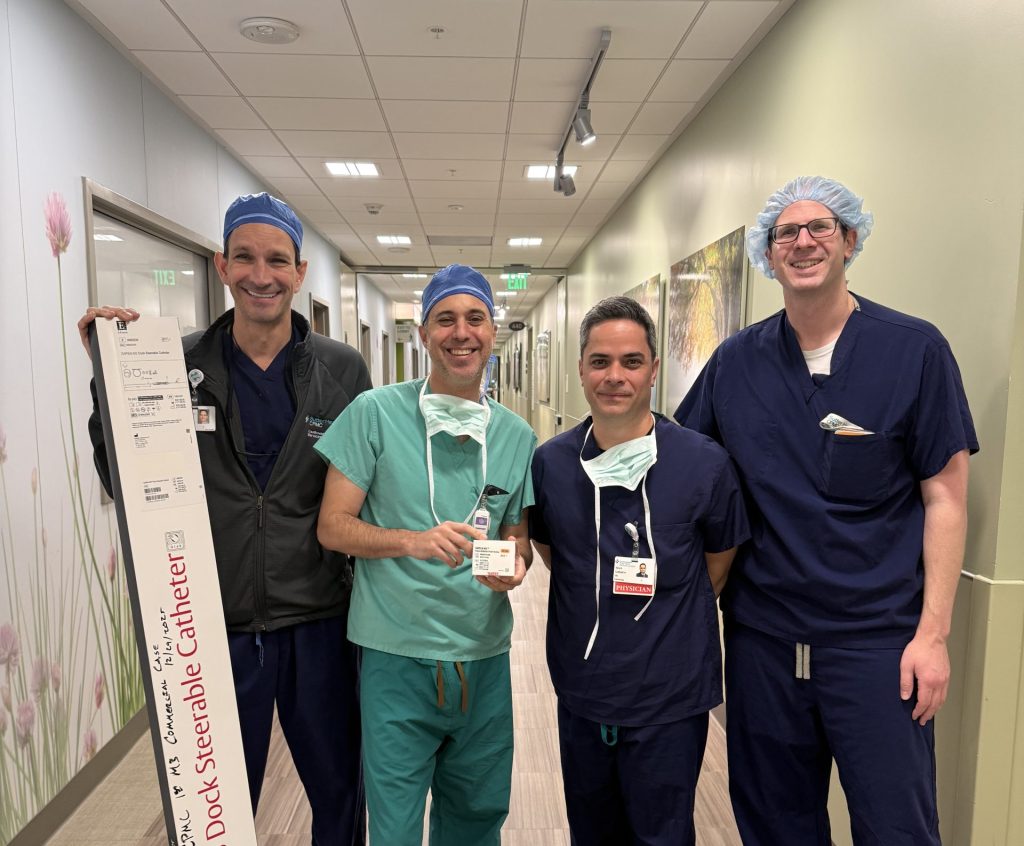Just in time for Lung Cancer Awareness Month, an interventional pulmonary team in San Francisco is celebrating its 200th robotic bronchoscopy for the early detection of lung cancer.
The minimally invasive procedure is available at Sutter’s California Pacific Medical Center and allows surgeons to efficiently navigate to patients’ suspicious lung nodules and biopsy them.
“CPMC was the first hospital in San Francisco to acquire robotic bronchoscopy in 2020,” says Interventional Pulmonologist Dr. Heba Ismail. “Using this advanced system allows us to detect and treat lung cancer earlier, which is a crucial first step in saving lives.”

Dr. Heba Ismail, an interventional pulmonologist at Sutter’s CPMC, uses a control pad to navigate a patient’s lungs using Ion’s Intuitive robot for bronchoscopy.
To determine if a patient has lung cancer, a low-dose CT scan is performed. If an abnormality is found, CPMC’s Lung Nodule Center team will recommend a lung biopsy using robotic bronchoscopy.
Robotic bronchoscopy, also known as robotic-assisted bronchoscopy, is the latest form of bronchoscopy, a procedure that lets doctors look into a person’s airways and lung passages using a tiny camera. It works like a smart GPS in car, but instead of turn-by-turn directions on roadways, doctors are journeying through a patient’s own lungs, stopping at the exact locations of suspicion. A real-time video feed lets the doctor know exactly what they’re seeing in order to collect samples needed for the lab, and the ultra-thin, ultra-flexible tube helps with maneuverability while in the tight spaces in the periphery of the patient’s lungs. “The ability to maintain visualization of the airway while navigating to a nodule is a big improvement over traditional bronchoscopy,” says Dr. Ismail.
Watch: SF hospital pioneering new technique to diagnose, treat lung cancer
Lung cancers in decline but still lead cancer deaths overall. Screening is key
In 2023, more than 127,000 Americans will die from the lung cancer. It is by far the leading cause of cancer deaths in the United States, more so than colon, breast and prostate cancer combined.
Screening for lung and other cancers is the best measure for early detection, particularly before symptoms ever appear.
“Most people aren’t aware lung cancer is one of the most treatable cancers with a 90 percent cure rate if caught early,” says CPMC nurse navigator Deborah Bishop.
Bishop says CPMC is working within Sutter’s integrated network and partnering with outside agencies to identify and screen patients at risk for lung cancer on an annual basis. “We are encouraging all patients with a history of smoking to speak to their doctor about having a low-dose CT scan as a first step.”
Throughout November, many Sutter Health facilities across Northern California are offering no-cost lung cancer screenings. CPMC’s screening is being held on November 4. The event is targeting people between the ages of 50-80, individuals who are active smokers or have quit smoking in the last 15 years, and those people have smoked the equivalent of a pack a day for at least 20 years.
According to Bishop, more than 500 people inquired about CPMC’s screening event, with 48 meeting the next step criteria and 12 individuals who are scheduled for a CT scan.
“The most important first step is to get screened,” says Dr. Ismail. “We can’t treat what we don’t know is there.”
For patients who do undergo robotic bronchoscopy, if cancer is found and the patient is deemed to be a good surgical candidate, the CPMC team can implement its Assisted Single Anesthetic Procedure, or ASAP, to remove the diseased nodule or mass during the same appointment.
To date, the team has completed nearly 30 ASAP procedures.
Learn more about Sutter Health’s lung and thoracic cancer services.





